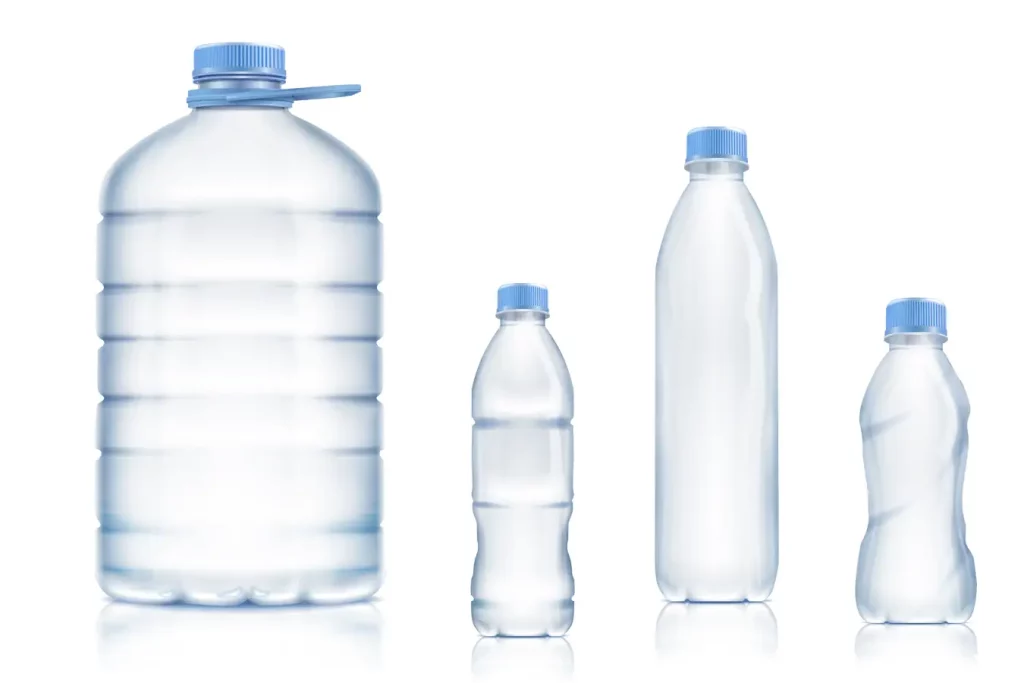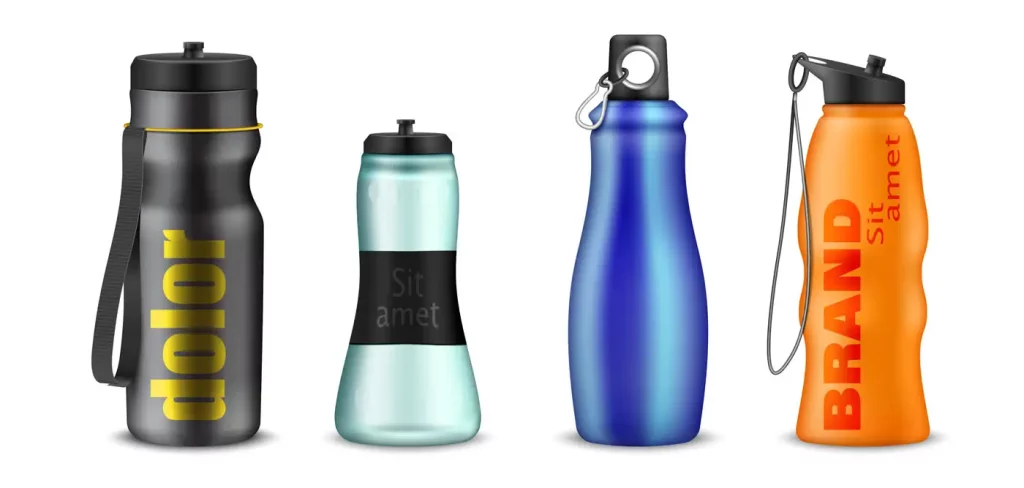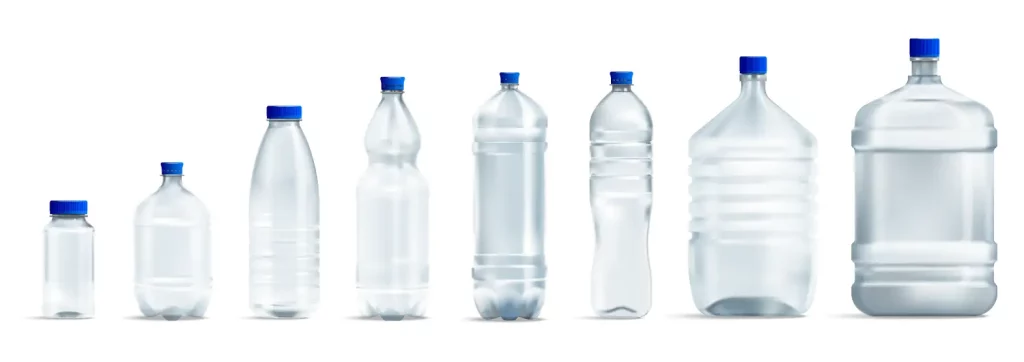“How big is a water bottle in inches?” Ever found yourself pondering this while packing for a trip or trying to fit one in a tight space?
It seems like a simple question, but the answer might surprise you.
Water bottles come in all shapes and sizes, after all.
And while some are slender and tall, others might be stout and wide.
To make things easy, we’ve cracked the code and measured up the most common bottles.
Stick around, and let’s unveil the mystery of the standard water bottle size together!
Understanding Water Bottle Sizes
Before we jump into the specifics, let’s first clarify what we mean by “water bottle size.” When we talk about the size of a water bottle, we are referring to its physical dimensions, such as height, width, and diameter. These measurements give us a clear idea of how much liquid a bottle can hold and how easily it can fit into different situations.
Water bottle sizes can vary significantly, depending on factors like their purpose, material, and design. Understanding these variations will help you make an informed decision when choosing a water bottle that suits your needs.
Common Water Bottle Sizes
Water bottles come (bottled water) in a range of sizes, each serving different purposes. Let’s explore the three most common categories: small-sized, medium-sized, and large-sized water bottles (different shapes).

Small-sized Water Bottles
Small-sized water bottles are typically compact and portable, making them convenient for on-the-go use. These bottles often range from 8 to 12 ounces in capacity. Measuring around 6 to 7 inches in height, they easily fit into backpack pockets, purses, or cup holders. These bottles are great for short outings, workouts, or when you need a quick sip of water.
Medium-sized Water Bottles
Medium-sized water bottles strike a balance between portability and capacity. They usually hold between 16 to 24 ounces of liquid. With a height of around 8 to 9 inches, they offer a bit more volume than small-sized bottles. These bottles are suitable for longer activities, such as hiking, running, or a day at the office. They provide enough hydration to keep you going without being too bulky.
Know more: Detailed Guide About Water Bottle Sizes in Inches
Large-sized Water Bottles
Large-sized water bottles are designed for those who require ample hydration throughout the day. With capacities ranging from 32 to 64 ounces or even more, these bottles are often favored by athletes, outdoor enthusiasts, or those in physically demanding jobs. Their height can vary from 10 to 12 inches, and they may have a wider diameter compared to smaller bottles. While they offer generous hydration, keep in mind that their larger size may make them less portable and heavier to carry.
Standard Water Bottle Dimensions
While water bottle sizes can vary among different brands and materials, there are some industry standards when it comes to their dimensions. Most standard water bottles have a height of around 8 to 9 inches and a diameter of approximately 2.5 to 3 inches. These measurements provide a comfortable grip and ensure the bottle fits into most cup holders. However, it’s essential to remember that these are general guidelines, and you may find slight variations depending on the specific brand or model.
Small Water Bottles (8 – 16 oz)
Small water bottles are usually about 5 to 7 inches tall, with a diameter of approximately 2.5 inches. They’re portable and handy, fitting into small bags and purses with ease.
Medium Water Bottles (17 – 24 oz)
Medium-sized water bottles range from 7 to 9.5 inches in height, with a diameter around 3 inches. They’re the go-to choice for office workers and gym-goers alike.
Large Water Bottles (25 – 32 oz)
Large water bottles, perfect for long outings, stand about 10 to 12 inches tall and have a diameter of 3.5 inches.
Extra Large Water Bottles (33 oz and Above)
Extra-large water bottles can be anywhere from 12 inches and above, with diameters reaching up to 4.5 inches. These are ideal for camping and hiking.
As we discussed earlier, could you please let me know how many inches tall a water bottle is?
Overall, A standard water bottle, like those sold in convenience stores, is approximately 9.5 inches tall. And this is the average height of a standard 16.9 fluid ounces (500 ml) water bottle is approximately 9.5 inches.
Physical Dimensions of Water Bottles in Inches
Height, Diameter, and Volume Relationships
The height and diameter of a water bottle together determine its volume. The taller and wider the bottle, the more water it can hold. But remember, a larger volume might not always be practical!
Cap Sizes and Their Impact
Bottle caps usually range from 1 to 2 inches in diameter. A larger cap makes it easier to clean the bottle, but it might be less convenient to drink from.
How Branding Influences Bottle Sizes
Different brands often have distinct sizes and designs. So, if you’ve ever wondered, “how big is a water bottle in inches?” you might want to consider the specific brand in question.
Popular Water Bottle Types and Their Dimensions
Water bottles come in various materials, each offering its unique advantages. Let’s explore some popular water bottle types and their corresponding dimensions.
Stainless Steel Water Bottles
Stainless steel water bottles have gained popularity due to their durability and ability to keep liquids cold or hot for extended periods. These bottles usually measure around 8 to 10 inches in height and have a diameter of 2.5 to 3 inches. Stainless steel bottles come in different capacities, ranging from 12 to 32 ounces. The dimensions may vary slightly based on the design and brand, but the overall size falls within this range.

Plastic Water Bottles
Plastic water bottles are lightweight, affordable, and commonly used for everyday hydration. Their dimensions can vary depending on the brand and style. Typically, plastic water bottles range from 6 to 10 inches in height, with diameters ranging from 2.5 to 3 inches. Their capacities can vary from small 8-ounce bottles to larger 24-ounce bottles.
Glass Water Bottles
Glass water bottles offer a sleek and eco-friendly alternative to plastic or stainless steel. Due to the fragility of glass, these bottles are often designed to be compact and portable. They typically measure around 7 to 9 inches in height and have a diameter of 2 to 3 inches. The capacity of glass water bottles can range from 12 to 20 ounces, making them suitable for those who prefer the taste and purity of water from glass containers.
To know more: How Many Bottles of Water Make Up 100 Ounces
Impact of Material on Bottle Size
Plastic Water Bottles
Plastic bottles tend to be lighter and come in all sizes. From tiny 8 oz bottles to hefty 2-liter ones, their size is versatile.
Glass Water Bottles
Glass bottles are usually heavier and come in medium to large sizes, typically around 12 to 14 inches in height and 3 to 4 inches in diameter.
Stainless Steel Water Bottles
Stainless steel bottles range widely in size, but due to their insulating properties, they’re often larger, around 10 to 12 inches tall and 3 inches in diameter.
Water Bottles in Specialized Applications
Sports Water Bottles
Sports water bottles need to be portable yet hold enough water. They’re typically around 9 inches tall and 3 inches in diameter.
Travel Water Bottles
Travel bottles are designed for compactness, generally around 6 to 8 inches tall with a diameter of 2.5 inches.
Hiking and Camping Water Bottles
These bottles need to be durable and large enough to carry ample water. They can range from 10 inches to over a foot tall, with diameters around 4 inches.
Comparing Water Bottle Sizes: Practical Examples
To help you visualize the differences in water bottle sizes, let’s compare a few practical examples.
Compact vs. Regular-sized Bottles: A Comparison
Imagine you’re going for a short walk in the park and want to carry a water bottle with you. A compact-sized bottle, approximately 6 inches in height, would easily fit into your bag or pocket. It provides enough hydration to quench your thirst during the walk without adding much weight or bulk.
Now, consider a regular-sized water bottle, around 9 inches tall. This size would be ideal for longer walks, workouts, or any activity where you need a bit more hydration. Its slightly larger capacity ensures you have enough water to keep you going without the need for frequent refills.

Medium vs. Large-sized Bottles: A Closer Look
Let’s say you’re planning a day hike in the mountains. A medium-sized water bottle, standing around 8 inches tall, would provide sufficient hydration to keep you energized throughout the hike. Its moderate size makes it easy to carry in a backpack while still offering an ample amount of water.
However, if you’re an avid hiker tackling more challenging trails, you might opt for a large-sized bottle. With a height of around 12 inches, this bottle can hold a substantial amount of water, ensuring you stay hydrated during extended treks. Just keep in mind that the larger size may require a backpack with dedicated bottle pockets or a separate hydration pack.
Environmental and Regulatory Considerations
Impact of Bottle Size on Environment
Did you know a larger water bottle often has a smaller carbon footprint per ounce of water? Plus, refillable bottles are a greener choice compared to single-use ones.
Regulations and Standards for Water Bottle Sizes
While there’s no strict regulation on how big a water bottle should be in inches, most companies adhere to standard sizes to meet customer expectations and manufacturing efficiencies.
How to Choose the Right Water Bottle Size
Now that you have a better understanding of water bottle sizes, you might be wondering how to choose the right size for your specific needs. Here are a few factors to consider:
- Hydration Requirements: Evaluate how much water you typically consume throughout the day and choose a bottle that can accommodate that amount without being too heavy or bulky.
- Activity and Duration: Consider the activities you’ll be engaging in and the duration of those activities. Smaller bottles are suitable for short outings, while larger bottles are better for longer adventures.
- Portability: Determine how important portability is to you. If you’re always on the move, a compact or medium-sized bottle may be more suitable.
- Storage: Assess where and how you plan to store the water bottle. If you have limited space, a smaller-sized bottle might be a better fit.
- Material and Insulation: Consider the material and insulation properties you prefer. Stainless steel bottles, for example, excel at keeping beverages hot or cold but may be slightly heavier.
By considering these factors, you can choose a water bottle size that aligns with your lifestyle and keeps you adequately hydrated.
Non-Standard Water Bottle Sizes
While we have discussed common water bottle sizes, it’s worth mentioning that there are non-standard or specialized sizes available as well. Some brands offer unique bottle dimensions that cater to specific purposes, such as ultra-compact bottles for minimalist travel or oversized bottles for extreme sports enthusiasts. These non-standard sizes provide alternatives for individuals with specific requirements or preferences.
Measuring Water Bottle Size: Tips and Techniques
If you already have a water bottle and want to measure its dimensions accurately, here are a few tips and techniques:
- Height: Measure the distance from the base to the highest point of the bottle. Ensure the bottle is standing upright and use a ruler or tape measure to determine the height in inches.
- Diameter: Measure the widest part of the bottle. Place the ruler or tape measure across the bottle’s opening, ensuring it passes through the center. Note the diameter in inches.
- Circumference: If you prefer, you can measure the circumference of the bottle instead of the diameter. Wrap a flexible measuring tape around the widest part of the bottle, ensuring it forms a complete circle. Take note of the circumference in inches.
By following these simple techniques, you can accurately measure the dimensions of your water bottle (length of water bottle).
The Impact of Water Bottle Size on Portability
When choosing a water bottle, portability is often a key consideration. The size of the bottle directly affects how easily you can carry it while on the move. Here are a few insights into the relationship between water bottle size and portability:
- Compact and Small-sized Bottles: These bottles are highly portable, fitting easily into bags, backpack pockets, or cup holders. Their smaller size makes them convenient for everyday use and short outings.
- Medium-sized Bottles: While slightly larger than compact bottles, medium-sized bottles still offer good portability. They can fit comfortably in most backpacks and gym bags without adding excessive weight.
- Large-sized Bottles: Large-sized bottles are less portable due to their increased dimensions and capacity. They may require dedicated bottle pockets in backpacks or be carried separately in a hydration pack. However, for activities that demand more hydration, the slightly reduced portability may be worth the trade-off.
Remember to balance your need for portability with your hydration requirements when choosing a water bottle size.
Design Considerations for Water Bottle Sizes
Water bottle sizes not only affect functionality but also influence the design of the bottles themselves. Manufacturers take into account the dimensions and capacity of the bottles when creating user-friendly and innovative designs. Here are a few design considerations related to water bottle sizes:
- Ergonomics and Grip: Bottle sizes are often optimized for comfortable handling and easy gripping. Manufacturers may incorporate ergonomic shapes, textured surfaces, or contoured designs to enhance the user experience.
- Lid and Cap Designs: The dimensions of the bottle may impact the design of the lid or cap. Smaller bottles may have smaller openings, while larger bottles might feature wider mouths for easy filling and cleaning.
- Collapsible or Foldable Options: Some compact-sized water bottles are designed to be collapsible or foldable, allowing for easy storage when empty. These bottles are popular among travelers or individuals with limited space.
By considering design elements along with the size, you can find a water bottle that not only meets your hydration needs but also aligns with your preferences.
The Role of Water Bottle Size in Sustainability
Sustainability is a growing concern for many individuals, and the size of water bottles can play a part in reducing waste and environmental impact. Here’s how water bottle size relates to sustainability:
- Reducing Single-Use Bottles: By opting for a larger-sized water bottle, you can minimize the need for single-use plastic bottles. A bottle with a larger capacity allows you to refill it multiple times, reducing the number of disposable bottles consumed.
- Choosing Reusable Materials: Consider choosing water bottles made from durable and reusable materials like stainless steel or glass. These materials are built to last and can be used repeatedly, minimizing waste and promoting sustainability.
By consciously selecting a water bottle size that aligns with your usage habits and investing in reusable options, you can contribute to reducing plastic waste and promoting a more sustainable lifestyle.
FAQs About Water Bottle Sizes
What are the standard water bottle sizes in inches?
Does the material of the bottle affect its size?
Why do water bottles come in various sizes?
How does the design of a water bottle affect its measurements?
What are the environmental impacts of different water bottle sizes?
How can I measure the size of my water bottle?
What is the most common water bottle size?
Are larger water bottles heavier?
Can I find water bottles with non-standard sizes?
How can water bottle size impact portability?
How does water bottle size relate to sustainability?
Summary
In conclusion, water bottle sizes vary depending on their purpose, material, and design. Small-sized water bottles are compact and portable, ideal for quick outings. Medium-sized bottles strike a balance between portability and capacity, suitable for longer activities. Large-sized bottles are designed for those needing ample hydration throughout the day. While standard water bottles generally have heights of 8 to 9 inches and diameters of 2.5 to 3 inches, variations exist among different brands and materials.
When choosing a water bottle size, consider factors such as your hydration requirements, the activities you engage in, portability needs, storage limitations, and preferred materials. Measuring a water bottle’s dimensions accurately can be done by determining its height, diameter, or circumference. Enjoy learning!
Learn more: Way to Attach Water Bottle to Backpack


